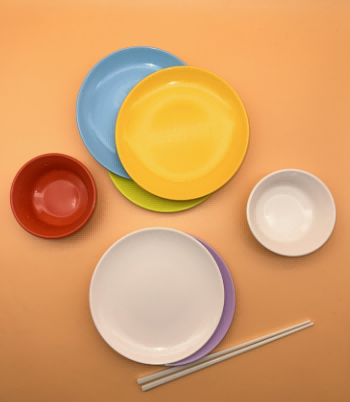Environmentally friendly, renewable resources
2024-06-05
Types and materials: Eco-friendly tableware can include a variety of types and materials. Common environmentally friendly tableware includes stone imitation porcelain, inorganic powder tableware, stainless steel tableware, glass tableware, ceramic tableware, bamboo tableware, paper tableware and degradable tableware. Each material has its advantages and applicable scenarios, and choosing the right eco-friendly tableware depends on your specific needs and preferences.

International cooperation and initiatives: Many international organizations and initiatives work to promote the use of environmentally friendly tableware. For example, the United Nations Environment Program (UNEP) launched the "Clean Oceans" initiative to reduce marine plastic pollution and encourage countries to take action to reduce the use of single-use plastic tableware. In addition, many countries and regions have also participated in organizations such as the Global Alliance "Plastic Pollution" (Plastic Pollution Coalition), working together to reduce the problem of plastic pollution.
Continuous innovation and technological development: The field of environmentally friendly tableware is constantly developing and innovating. Technological advances and investment in R&D are driving the emergence of more sustainable, biodegradable and recyclable tableware materials. For example, some innovative materials use plant fibers, mycelium, seaweed, etc. to replace plastics to reduce their impact on the environment.
Education and personal responsibility: In addition to government and organizational efforts, individual behavior and awareness are also crucial. Education and awareness campaigns can help raise public awareness of eco-friendly tableware and motivate them to make eco-friendly choices in their daily lives. Everyone can reduce their reliance on plastic by choosing eco-friendly tableware as part of personal responsibility and a sustainable lifestyle.
Continuous challenges and improvements: Although the use of environmentally friendly tableware brings many benefits, there are still some challenges and room for improvement. For example, the production process of some environmentally friendly tableware may still involve energy consumption and carbon emissions. In addition, the establishment of effective recycling and reuse systems is also an important challenge. Therefore, continued research, innovation and policy support are key to ensuring the optimal use and environmental benefits of environmentally friendly tableware.




